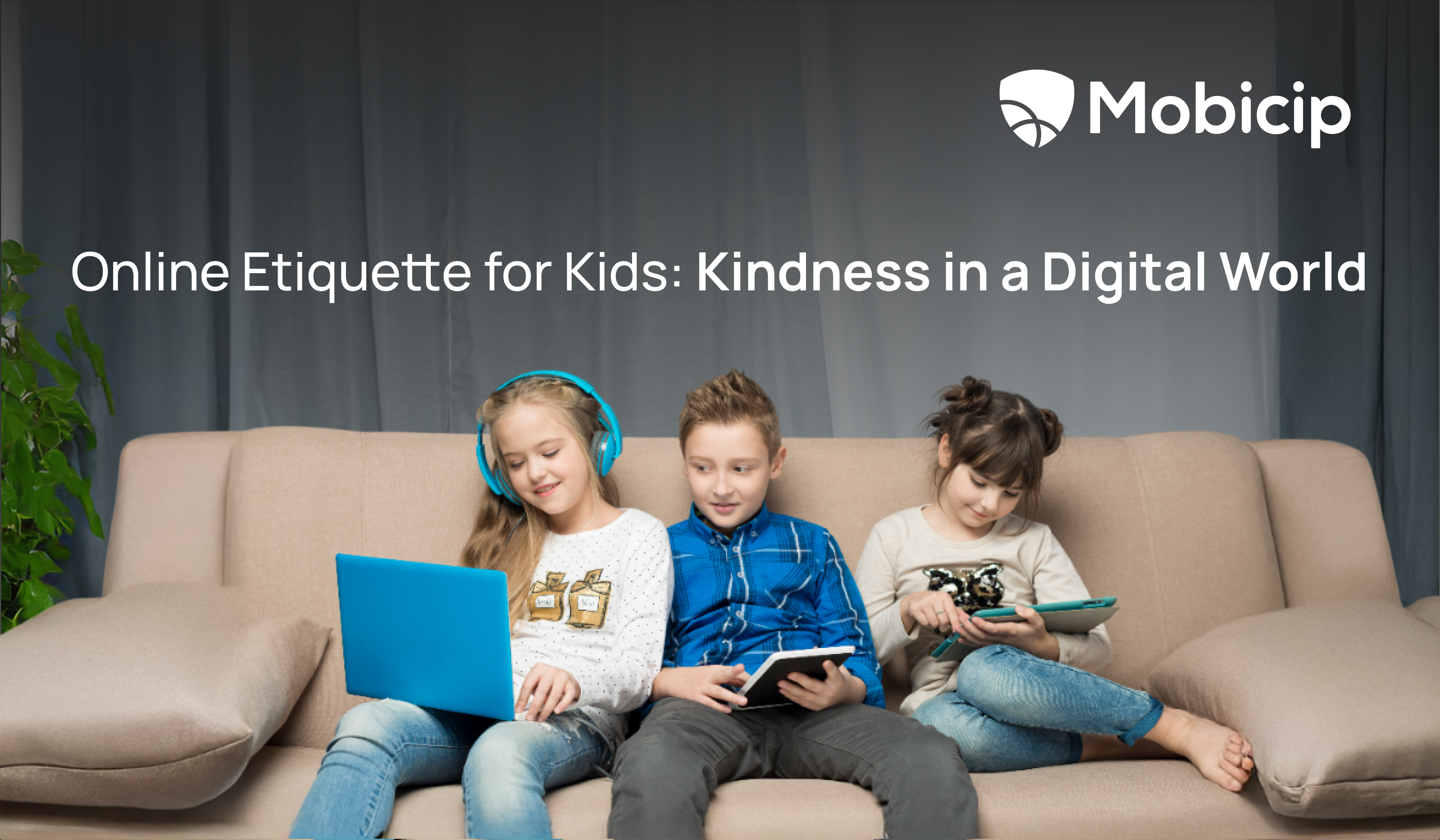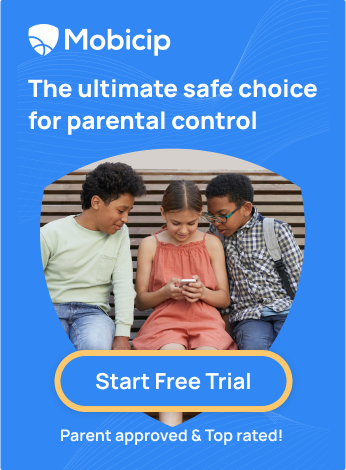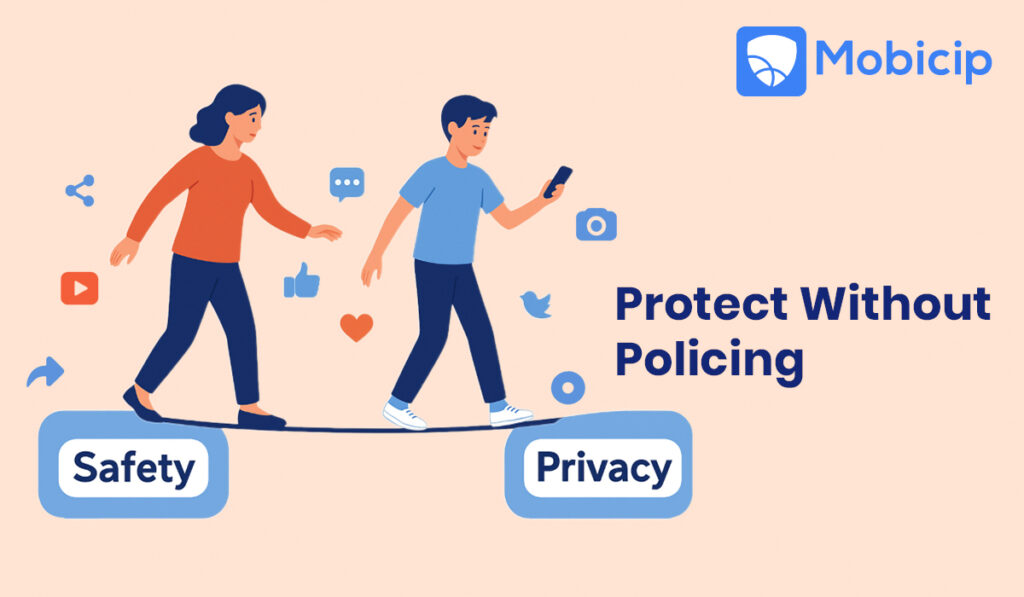Online Etiquette for Kids: Kindness in a Digital World
“Teach love, generosity, good manners and some of that will drift from the classroom to the home and who knows, the children will be educating the parents.” — Roger Moore

That wisdom rings especially true in today’s digital world, where online etiquette has become just as important as real-world manners. As kids spend more and more time communicating, learning, and playing online, how they behave in virtual spaces can have a powerful impact — not just on their friends and peers, but on themselves.
Online etiquette, sometimes called netiquette, refers to the set of rules and good practices for respectful communication on the internet. It’s about treating others with kindness, using polite language, respecting privacy, and thinking before you post or comment. For children growing up in a digital-first world, understanding online etiquette isn’t just nice to have — it’s essential.
The way kids interact online is shaping their social skills in lasting ways. Virtual spaces like group chats, gaming platforms, and social media have become the new playgrounds, classrooms, and hangout spots. Learning empathy, respect, and responsibility online helps children develop better relationships offline too.
Of course, navigating this new reality can feel overwhelming for parents. That’s where tools like Mobicip come in. Mobicip is more than just a parental control app — it’s a partner in raising respectful, kind digital citizens. With features that help set healthy boundaries, monitor activity, and encourage positive behavior, Mobicip supports families in teaching kids not just how to use technology — but how to use it well.
Understanding Online Etiquette
Awareness of digital etiquette has not quite kept pace with the explosive growth of the digital world. Unlike in-person interactions, where social cues like tone, body language, and facial expressions guide our behavior, the online world strips all of that away. To make things even trickier, every platform — whether it’s a group chat, gaming space, or social media feed — has its own culture, language, and unspoken rules. No wonder kids (and even adults) sometimes struggle to figure out what’s acceptable and what’s not.
Digital Etiquette is the practice of using good manners and respectful behavior online. It’s about thinking before you type, being kind in your comments, respecting people’s privacy, and treating others the way you’d like to be treated — whether in a classroom, a gaming lobby, or a social media thread.
Online behavior isn’t just about the moment — it can have lasting consequences. A rude comment, an impulsive post, or online teasing can easily lead to hurt feelings, damaged friendships, or a negative digital reputation. On the other hand, practicing good digital etiquette helps kids communicate more clearly, avoid unnecessary conflict, and build a positive online presence.
Why Teaching Online Etiquette Matters
The way kids behave online can have a bigger impact than they often realize. Teaching online etiquette isn’t just about being polite — it’s about protecting kids from risks, helping them build healthy relationships, and setting them up for future success.
Poor online behavior can lead to serious consequences, such as:
- Cyberbullying: Without understanding online boundaries, kids may hurt others through teasing, exclusion, or mean comments — sometimes without even realizing the damage they’re causing.
- Misinformation: Kids who aren’t taught to question what they see online may unknowingly share false information, rumors, or fake news, spreading confusion and sometimes even harm.
- Reputation Damage: Screens can create a false sense of distance, making it easy to post things in the heat of the moment — things that may later be embarrassing or regrettable.
Another reason online etiquette matters is the lasting nature of digital footprints. Everything shared online — photos, comments, videos, and reactions — leaves a trail. These digital records don’t disappear easily. Future colleges, employers, and even friends may search online to learn more about someone. A single thoughtless post can come back to haunt a child years later.
Things to Remember about Online Etiquette
Here are some essential things kids (and adults!) should always keep in mind:
There’s Always a Real Person Behind the Screen
Every message, comment, or post reaches another human being. Treat others with kindness and empathy, just like you would in person.
Behave Online the Way You Would in Real Life
Basic good manners never go out of style — online or offline. Avoid rude language, hurtful jokes, or mean comments.
Pay Attention to the Space You’re In
Different online spaces have different rules and tones. Be mindful of where you are posting — what’s fine in a group chat may not be okay in a school email or public post.
Respect People’s Time and Attention
Keep messages clear and relevant. Avoid sending spam, flooding group chats, or forwarding unnecessary content.
Pause Before You Post
Once something is online, it can be hard to take back. Ask yourself: Would I be okay if my teacher, parent, or future employer saw this?
Share Information Responsibly
Always check the source before sharing news, images, or facts. Don’t spread fake news, rumors, or unverified content.
No Bullying, Flaming, or Trolling
Be kind in your words. Avoid picking fights, making fun of others, or posting hurtful comments to get attention.
Interacting Safely
Online strangers are still strangers. Never share personal information like your address, phone number, school name, or passwords. Never agree to meet someone from the internet in real life without a trusted adult’s knowledge.
Understanding Emojis and Shortforms
Emojis and slang can mean very different things in different online spaces. Some may carry hidden or offensive meanings. Teach kids to use them carefully and to ask if they’re unsure about something.
What Parents and Educators Can Do
Teaching children to be responsible digital citizens requires intentional guidance. Here are 20 essential lessons parents and educators can share to help kids navigate the online world with kindness, safety, and respect.
Online or Offline — Good Manners Matter
Whatever rules apply in real life — respect, kindness, no bullying — apply equally online.
Teach Empathy
There’s a Real Person Behind Every Screen. Encourage kids to pause and consider how their words might make someone feel. Even if no one knows them personally, their online behavior reflects their values and character. Teach kids not to provoke arguments or attack people for attention. Guide kids to avoid inside jokes or slang that might exclude or confuse others.
Teach Patience: Read First, Respond Later
Kids should read the whole thread or post before replying — avoid reacting without context. Teach kids to ask themselves: Would I say this in person? or Would I be okay if a teacher or parent saw this? Model how to disagree with ideas, not attack people.
Encourage Clear, Calm Communication
Avoid all-caps (which reads as shouting) or aggressive punctuation like “!!!!” to get a point across. People mistype, misunderstand, or make errors online — practice patience and forgiveness. Posting the same message multiple times is distracting and annoying. Teach kids to acknowledge others’ work, ideas, or sources.
Teach Kids to Respect Privacy
Never share others’ personal information or images without permission. Encourage thoughtful contributions rather than empty comments like “ok” or “me too” in group chats. Help kids understand what’s appropriate to share — personal details, photos, and location data should be handled carefully.
Teach Safe Interactions with Strangers
Online strangers are still strangers. Kids should never share personal info or agree to meet without parental guidance.
Decode Emojis, Slang, and Shortforms
Explain that emojis or slang can have hidden meanings — what seems funny to one person might feel offensive to another.
Be a Role Model
“The hardest job kids face today is learning good manners without seeing any,” said Fred Astaire. Ultimately, kids learn most from what adults do online. Show them how to communicate kindly, think critically, and respect others in your own digital behavior.
The Role of Technology in Teaching Online Etiquette
Technology itself can play a key role in helping parents and educators guide children towards responsible online behavior. From parental control apps to AI moderation tools, several tech solutions are designed to support good digital habits and enforce netiquette.
How Parental Control Apps Like Mobicip Help Enforce Digital Etiquette
Parental control tools like Mobicip provide practical ways to guide children’s online behavior while giving parents peace of mind. Some useful features include:
- Screen Time Management: Helps children balance their online and offline lives by setting limits for device usage.
- Content Filtering: Blocks inappropriate or harmful content, helping kids stay within age-appropriate online spaces.
- Activity Monitoring: Allows parents to view browsing history and app usage, creating opportunities for healthy conversations about online choices.
- Safe Search and YouTube Filters: Ensures that search results and videos align with family values and digital etiquette guidelines.
- Location Tracking: Supports safety without constant checking in, reducing anxiety for both parents and kids.

Benefits of AI-Driven Moderation Tools
AI moderation tools are increasingly being used on social media platforms, gaming sites, and online learning spaces to foster safer interactions. Their benefits include:
- Real-Time Detection of Harmful Language: Flags or blocks offensive words, bullying, or inappropriate content before it spreads.
- Customized Filters: Allows educators and parents to set specific language or topic restrictions.
- Preventing Cyberbullying: AI tools can automatically alert moderators or parents to repeated harmful behavior.
- Teaching Moment Alerts: Prompts children to reconsider posts or messages that may be offensive or unkind.
Educational Platforms That Promote Responsible Online Behavior
Several online learning platforms are now designed with built-in lessons on digital citizenship and online etiquette, including:
- Common Sense Education: Offers interactive lessons on safe and respectful online communication.
- Google’s Be Internet Awesome: Teaches kids about online safety, privacy, and kindness through games and quizzes.
- iKeepSafe: Provides resources for both parents and kids on privacy, security, and digital footprint management.
These tools and platforms work best when combined with active parenting and open communication, turning everyday online experiences into valuable learning opportunities.
Conclusion
At its heart, teaching online etiquette isn’t really about technology at all — it’s about raising thoughtful, compassionate human beings. Screens may separate us physically, but the core values that guide respectful communication remain timeless: kindness, empathy, and responsibility.
As parents and educators, the goal isn’t just to manage screen time or block harmful content — it’s to prepare kids for a world where their words travel faster, further, and sometimes last forever. The digital world is their new stage, and how they show up there matters.
Helping kids build positive online habits today plants the seeds for how they’ll treat others — and themselves — tomorrow. Because long after the latest app fades or a social platform evolves, what will stay with them is the ability to listen, think, care, and connect — online and offline.
In the end, digital etiquette isn’t just about following rules — it’s about choosing to be the kind of person who makes the internet, and the world, a little better for everyone.





